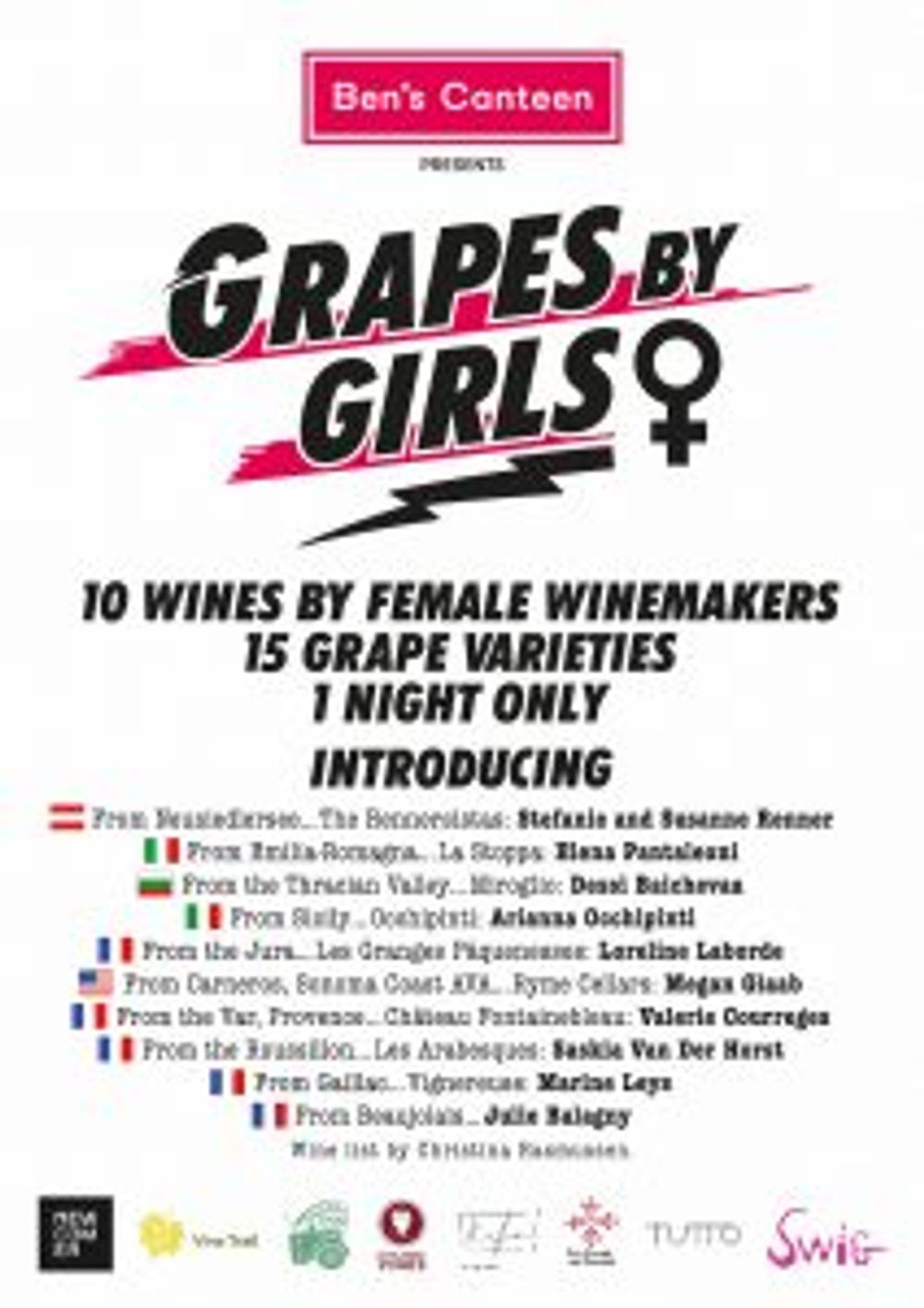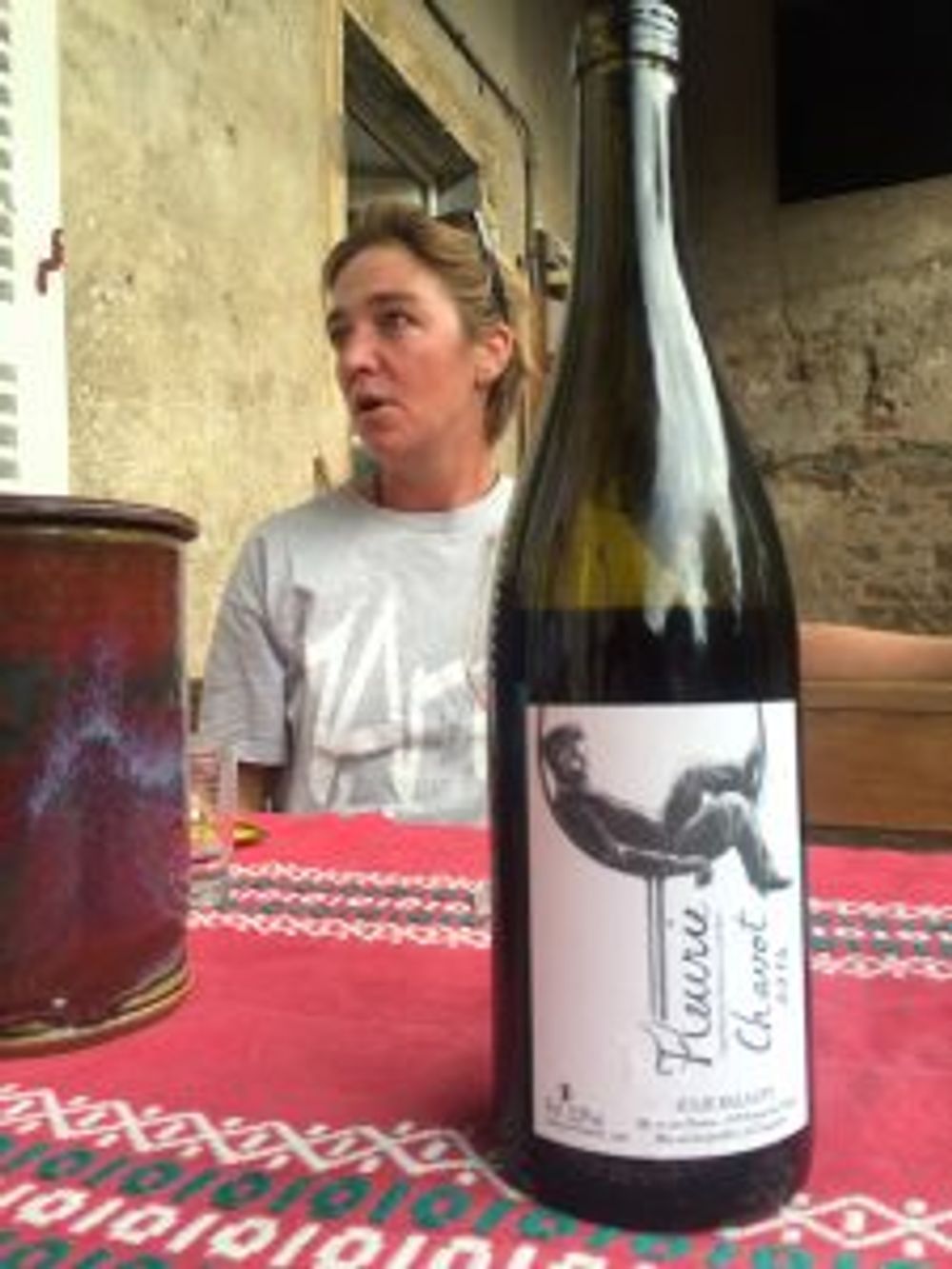The thinking behind putting together a 10-wine list, the problems encountered, and why I am focusing on women winemakers in the first place

Christina Rasmussen at Ben’s Canteen
I work in Battersea, London, on Northcote Road to be precise, so often head to Ben’s Canteen for an after-work drink. The first time I visited was around this time last year. The team was serving Damien Coquelet’s Chiroubles, one of my favourite Beaujolais producers. Coquelet only produces very small quantities, so it was a welcome surprise to see it on sale. The next time I went, they had listed Cambridge Road’s Naturalist petnat from New Zealand – a super, bright, clean small-production petnat. Lovely – both strong reasons to be excited.

Ben Walton
I enjoyed the vibe at Ben’s Canteen so much that I approached Ben for an interview last year, which you can read here. Ben and I got to know each other a little through the wine world, and so when he emailed me to meet up about a new project I immediately agreed to meet.
Ben discovered that 70% of his customers are female, and often in the evening it is 100%. With all these women coming in through his doors, Ben wanted to something to celebrate women in all that (we) can be. “Why not women winemakers?” I asked.
The idea was set in stone. We further discussed whether we should elaborate and pick a theme – subjects like rosé, orange wine, “cool climates to cool down” were discussed, as the event takes place mid-summer, but I decided to keep it simple for now in order to explore different regions and styles.
Below, I introduce my list, and then briefly explore the subject of feminism, sexism and the UK and international wine trade.
So how did the list come about?
I’m thrilled with the list. Writing a list is not easy. Sometimes a producer must be lifted off because the price point is too high for the target audience. Other times, it is infuriatingly sold out, and no matter how hard you try you cannot rewind time to those few months ago where a few bottles remained, unless you have superpowers, which unfortunately I do not possess.


Julie Balagny
My key aim was to demonstrate a variety of styles that are suitable to what I hope will be a balmy, hot summer’s evening with friends, both those that work in wine and those that do not. We are showing 10 wines across 10 very unique terroirs across five countries, composed of 15 grape varieties. We have two naturally sparkling wines, four whites (including one skin contact), two entirely different rosés (one pale, one dark – I want to challenge consumer perceptions about dark rosé) and two brilliant thirst-quenching reds, which we will serve chilled.
The list began with approximately 25 producers. Once I had cut them down to 10, I suddenly noticed that I had five producers from France. I have always loved French wine, and lived for a year in Burgundy and Paris. Burgundy, Beaujolais and the Jura are passions of mine, but I hadn’t for a second thought that the country would dominate my list by as much as half. I considered rethinking my list for a while, but decided that they were there for a reason.
That reason? Simply phrased, the wines stood out to me for various reasons: unique terroir-driven wines from entirely different soil compositions from different microclimates with different grape varieties and winemaking techniques.

Furthermore, I read today that Charlotte Molinari, French winemaker of Bordeaux, was refused the right to buy a tractor, on the grounds of her sex. Excuse me – does possessing a vagina mean that we cannot operate heavy machinery? (Sighs inwardly) This made me even more determined to highlight French female winemaking talent.
Finally, a certain focus on one country also provides me with the opportunity to highlight another country next time around. South Africa? Spain? Portugal? Australia? I’m looking at you.
FEMINISM: (noun) the belief and aim that women should have the same rights and opportunities as men; the struggle to achieve this aim (Oxford Dictionary)
I am a feminist. I believe strongly in women’s rights, rights to abortions and in equal pay and treatment in the workplace. I was asked recently whether I have ever come across sexism in my (four year long) career in wine, a question to which I immediately replied “no.” It’s true – I never have.
Until this question arose, I had never appreciated how rare that still is. The person in question has experienced it many times in the music/entertainment industry. I began to ask other friends and to notice how many other sectors still have a hideous amount of sexism in their workplace. Some experience it in some form almost on a day-to-day basis.
This made me think about how brilliant the UK wine trade is. The wine world, in the UK and abroad, is still predominantly male. This does not bother me per se. Hazarding a guess, my ratio of male friends to female friends in the wine industry is 80 / 20, possibly even 90 / 10. I have wonderful male friends who care for me, support me and advise me. I strongly dislike any “sex vs sex” situations and prefer an androgynous approach. Another friend’s sister refers to everybody they know as “they”, as opposed to “him” and “her.” I love that idea and I’m beginning to adopt it myself.

Stefanie and Susanne Renner of The Rennersistas
Despite how lucky myself and other women in the industry are now, it most certainly has not always been the case in the past, and still isn’t in many other countries around the world. So while for me, the Grapes by Girls event most definitely is not an outcry against treatment of sexes in my own industry, it is rather a celebration of women’s rights and women being permitted to be labourers and farmers with no questions asked.
Because that is, after all, what winemakers are and should be – they work hard and get their hands dirty, they have soil under their fingernails and sweaty brows – have you tried harvesting in summer heat? Let alone working in the vineyard all year round?
Thus, Grapes by Girls is a celebration of the amazing things that women can achieve, because just decades ago we had far less freedom.








































